Bhabatosh Chanda
Significance of Anatomical Constraints in Virtual Try-On
Jan 04, 2024



Abstract:The system of Virtual Try-ON (VTON) allows a user to try a product virtually. In general, a VTON system takes a clothing source and a person's image to predict the try-on output of the person in the given clothing. Although existing methods perform well for simple poses, in case of bent or crossed arms posture or when there is a significant difference between the alignment of the source clothing and the pose of the target person, these methods fail by generating inaccurate clothing deformations. In the VTON methods that employ Thin Plate Spline (TPS) based clothing transformations, this mainly occurs for two reasons - (1)~the second-order smoothness constraint of TPS that restricts the bending of the object plane. (2)~Overlaps among different clothing parts (e.g., sleeves and torso) can not be modeled by a single TPS transformation, as it assumes the clothing as a single planar object; therefore, disregards the independence of movement of different clothing parts. To this end, we make two major contributions. Concerning the bending limitations of TPS, we propose a human AnaTomy-Aware Geometric (ATAG) transformation. Regarding the overlap issue, we propose a part-based warping approach that divides the clothing into independently warpable parts to warp them separately and later combine them. Extensive analysis shows the efficacy of this approach.
Significance of Skeleton-based Features in Virtual Try-On
Sep 01, 2022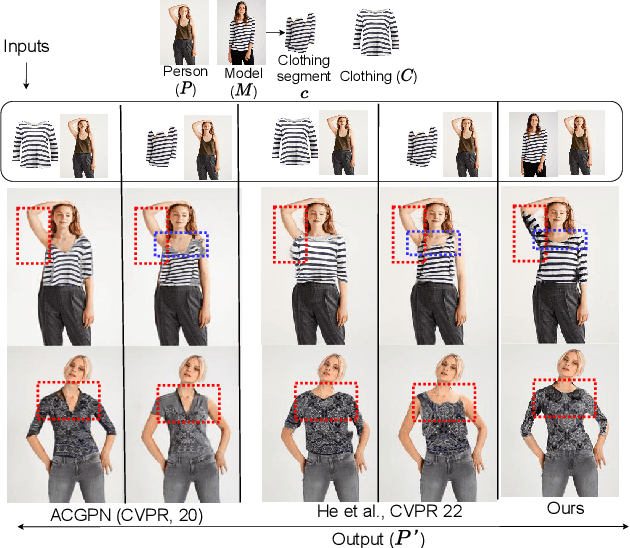
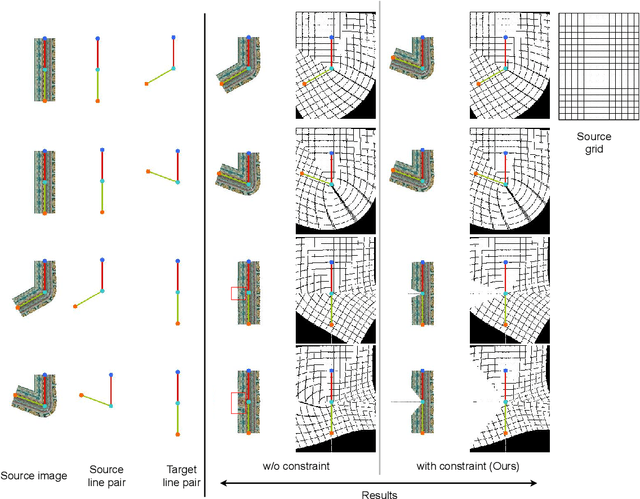

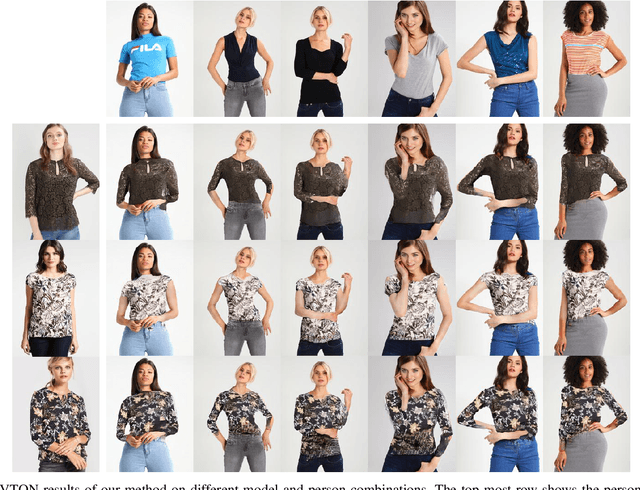
Abstract:The idea of \textit{Virtual Try-ON} (VTON) benefits e-retailing by giving an user the convenience of trying a clothing at the comfort of their home. In general, most of the existing VTON methods produce inconsistent results when a person posing with his arms folded i.e., bent or crossed, wants to try an outfit. The problem becomes severe in the case of long-sleeved outfits. As then, for crossed arm postures, overlap among different clothing parts might happen. The existing approaches, especially the warping-based methods employing \textit{Thin Plate Spline (TPS)} transform can not tackle such cases. To this end, we attempt a solution approach where the clothing from the source person is segmented into semantically meaningful parts and each part is warped independently to the shape of the person. To address the bending issue, we employ hand-crafted geometric features consistent with human body geometry for warping the source outfit. In addition, we propose two learning-based modules: a synthesizer network and a mask prediction network. All these together attempt to produce a photo-realistic, pose-robust VTON solution without requiring any paired training data. Comparison with some of the benchmark methods clearly establishes the effectiveness of the approach.
An Unsupervised Approach towards Varying Human Skin Tone Using Generative Adversarial Networks
Oct 30, 2020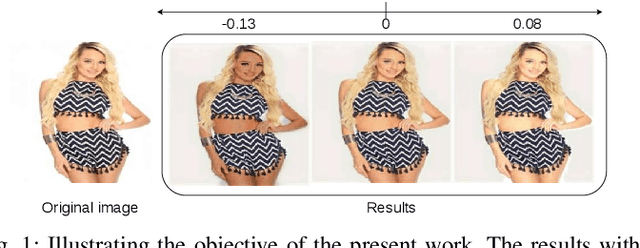
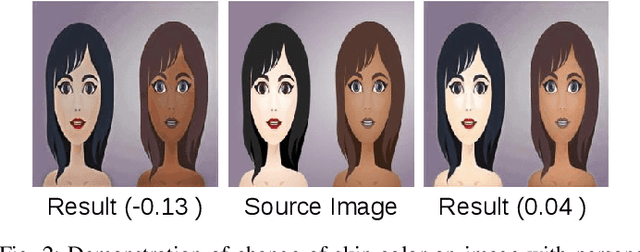
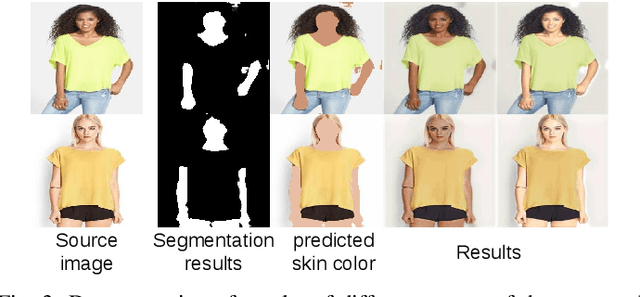
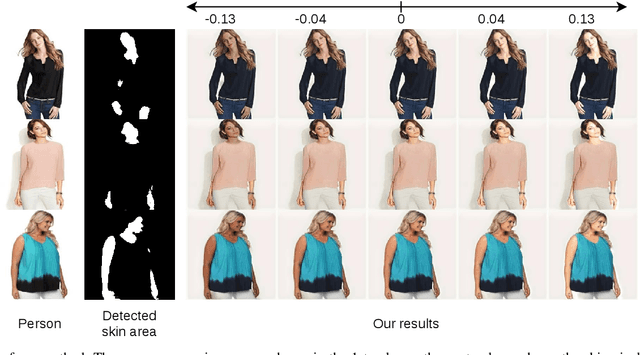
Abstract:With the increasing popularity of augmented and virtual reality, retailers are now focusing more towards customer satisfaction to increase the amount of sales. Although augmented reality is not a new concept but it has gained much needed attention over the past few years. Our present work is targeted towards this direction which may be used to enhance user experience in various virtual and augmented reality based applications. We propose a model to change skin tone of a person. Given any input image of a person or a group of persons with some value indicating the desired change of skin color towards fairness or darkness, this method can change the skin tone of the persons in the image. This is an unsupervised method and also unconstrained in terms of pose, illumination, number of persons in the image etc. The goal of this work is to reduce the time and effort which is generally required for changing the skin tone using existing applications (e.g., Photoshop) by professionals or novice. To establish the efficacy of this method we have compared our result with that of some popular photo editor and also with the result of some existing benchmark method related to human attribute manipulation. Rigorous experiments on different datasets show the effectiveness of this method in terms of synthesizing perceptually convincing outputs.
LGVTON: A Landmark Guided Approach to Virtual Try-On
Apr 01, 2020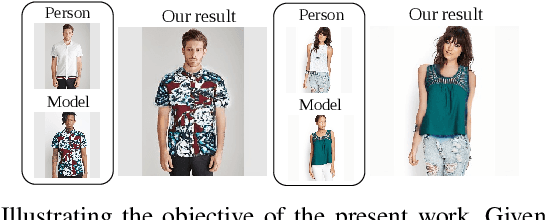
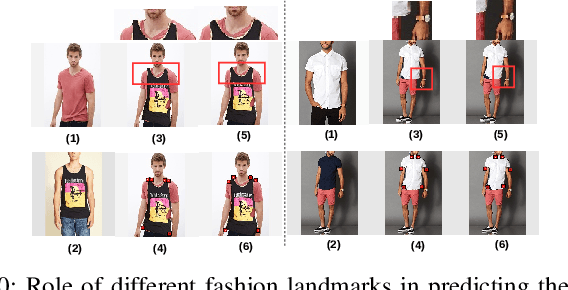
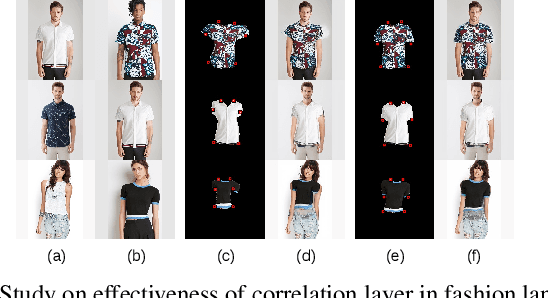
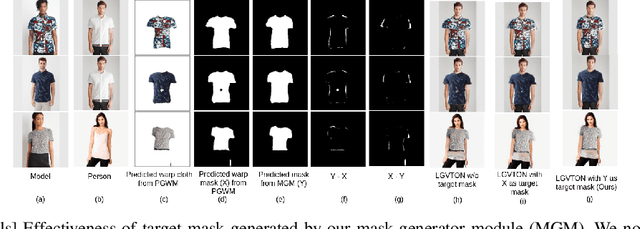
Abstract:We address the problem of image based virtual try-on (VTON), where the goal is to synthesize an image of a person wearing the cloth of a model. An essential requirement for generating a perceptually convincing VTON result is preserving the characteristics of the cloth and the person. Keeping this in mind we propose \textit{LGVTON}, a novel self-supervised landmark guided approach to image based virtual try-on. The incorporation of self-supervision tackles the problem of lack of paired training data in model to person VTON scenario. LGVTON uses two types of landmarks to warp the model cloth according to the shape and pose of the person, one, human landmarks, the locations of anatomical keypoints of human, two, fashion landmarks, the structural keypoints of cloth. We introduce an unique way of using landmarks for warping which is more efficient and effective compared to existing warping based methods in current problem scenario. In addition to that, to make the method robust in cases of noisy landmark estimates that causes inaccurate warping, we propose a mask generator module that attempts to predict the true segmentation mask of the model cloth on the person, which in turn guides our image synthesizer module in tackling warping issues. Experimental results show the effectiveness of our method in comparison to the state-of-the-art VTON methods.
Text Extraction and Restoration of Old Handwritten Documents
Jan 23, 2020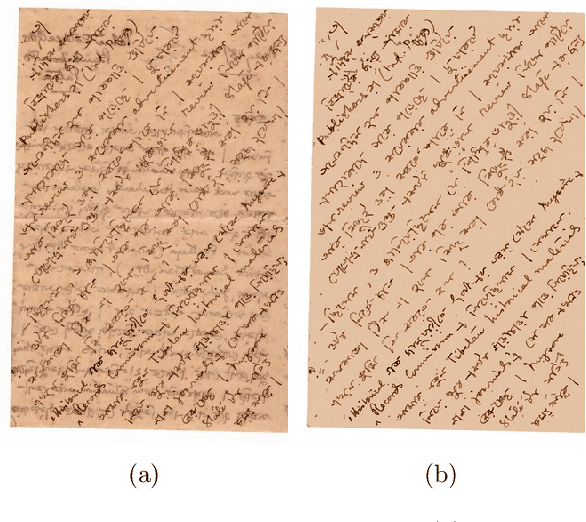
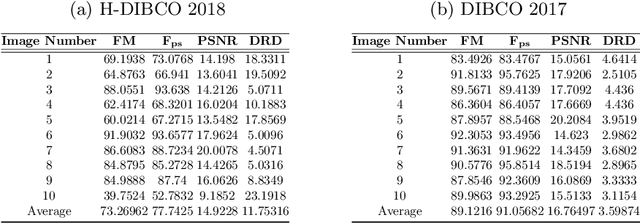
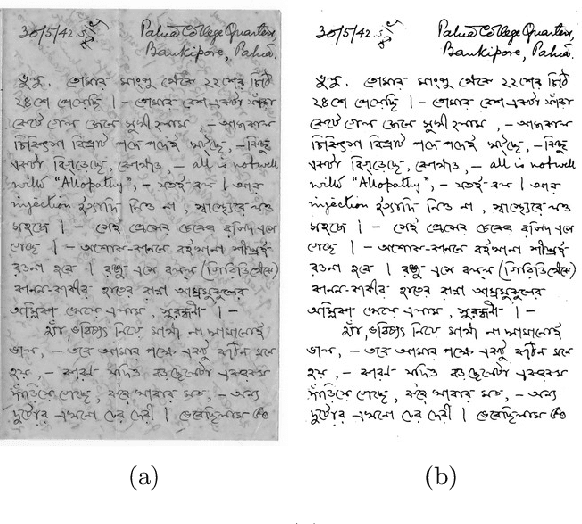
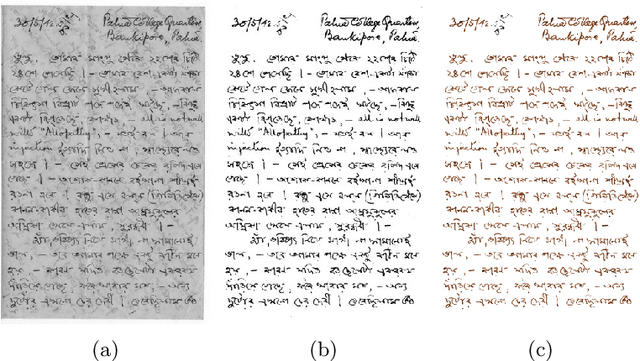
Abstract:Image restoration is very crucial computer vision task. This paper describes two novel methods for the restoration of old degraded handwritten documents using deep neural network. In addition to that, a small-scale dataset of 26 heritage letters images is introduced. The ground truth data to train the desired network is generated semi automatically involving a pragmatic combination of color transformation, Gaussian mixture model based segmentation and shape correction by using mathematical morphological operators. In the first approach, a deep neural network has been used for text extraction from the document image and later background reconstruction has been done using Gaussian mixture modeling. But Gaussian mixture modelling requires to set parameters manually, to alleviate this we propose a second approach where the background reconstruction and foreground extraction (which which includes extracting text with its original colour) both has been done using deep neural network. Experiments demonstrate that the proposed systems perform well on handwritten document images with severe degradations, even when trained with small dataset. Hence, the proposed methods are ideally suited for digital heritage preservation repositories. It is worth mentioning that, these methods can be extended easily for printed degraded documents.
Morphological Networks for Image De-raining
Jan 08, 2019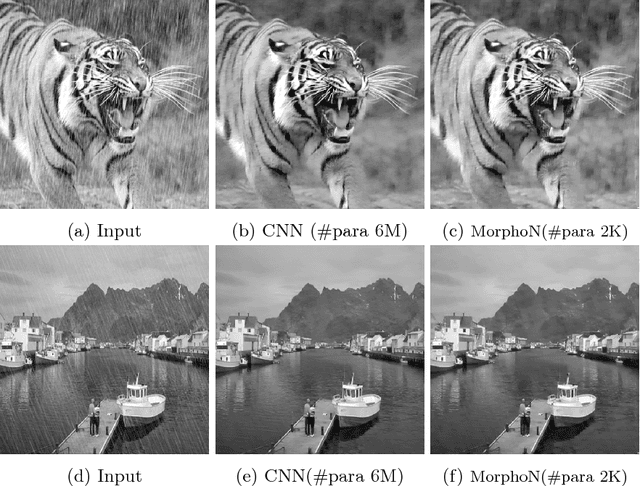
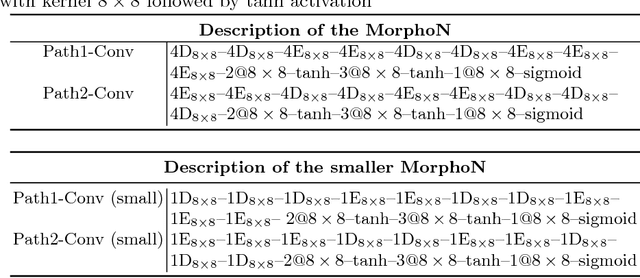
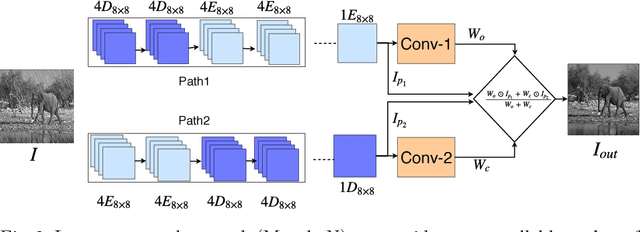

Abstract:Mathematical morphological methods have successfully been applied to filter out (emphasize or remove) different structures of an image. However, it is argued that these methods could be suitable for the task only if the type and order of the filter(s) as well as the shape and size of operator kernel are designed properly. Thus the existing filtering operators are problem (instance) specific and are designed by the domain experts. In this work we propose a morphological network that emulates classical morphological filtering consisting of a series of erosion and dilation operators with trainable structuring elements. We evaluate the proposed network for image de-raining task where the SSIM and mean absolute error (MAE) loss corresponding to predicted and ground-truth clean image is back-propagated through the network to train the structuring elements. We observe that a single morphological network can de-rain an image with any arbitrary shaped rain-droplets and achieves similar performance with the contemporary CNNs for this task with a fraction of trainable parameters (network size). The proposed morphological network(MorphoN) is not designed specifically for de-raining and can readily be applied to similar filtering / noise cleaning tasks. The source code can be found here https://github.com/ranjanZ/2D-Morphological-Network
* Mathematical Morphology \and Optimization \and Morphological Network \and Image Filtering
Dense Morphological Network: An Universal Function Approximator
Jan 01, 2019

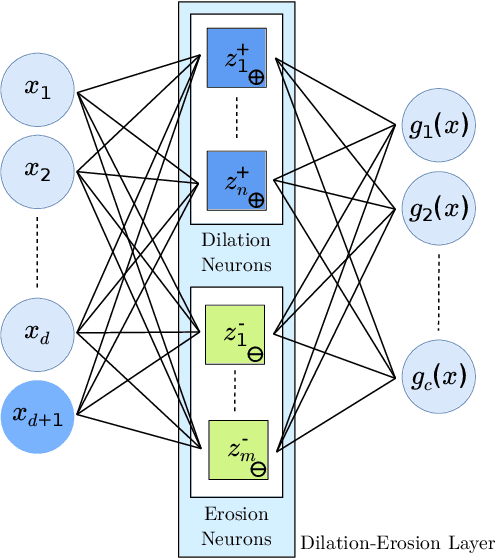
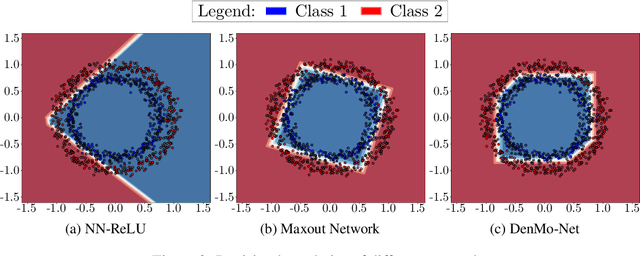
Abstract:Artificial neural networks are built on the basic operation of linear combination and non-linear activation function. Theoretically this structure can approximate any continuous function with three layer architecture. But in practice learning the parameters of such network can be hard. Also the choice of activation function can greatly impact the performance of the network. In this paper we are proposing to replace the basic linear combination operation with non-linear operations that do away with the need of additional non-linear activation function. To this end we are proposing the use of elementary morphological operations (dilation and erosion) as the basic operation in neurons. We show that these networks (Denoted as DenMo-Net) with morphological operations can approximate any smooth function requiring less number of parameters than what is necessary for normal neural networks. The results show that our network perform favorably when compared with similar structured network.
Reconstruction Loss Minimized FCN for Single Image Dehazing
Nov 27, 2018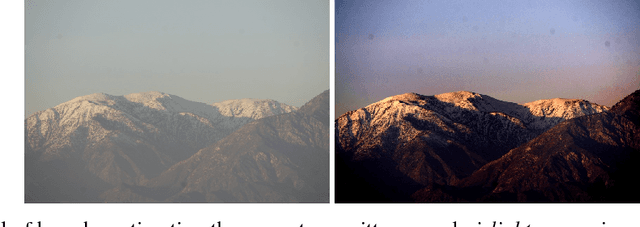
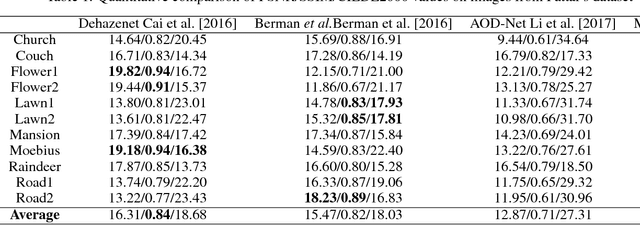


Abstract:Haze and fog reduce the visibility of outdoor scenes as a veil like semi-transparent layer appears over the objects. As a result, images captured under such conditions lack contrast. Image dehazing methods try to alleviate this problem by recovering a clear version of the image. In this paper, we propose a Fully Convolutional Neural Network based model to recover the clear scene radiance by estimating the environmental illumination and the scene transmittance jointly from a hazy image. The method uses a relaxed haze imaging model to allow for the situations with non-uniform illumination. We have trained the network by minimizing a custom-defined loss that measures the error of reconstructing the hazy image in three different ways. Additionally, we use a multilevel approach to determine the scene transmittance and the environmental illumination in order to reduce the dependence of the estimate on image scale. Evaluations show that our model performs well compared to the existing state-of-the-art methods. It also verifies the potential of our model in diverse situations and various lighting conditions.
FWLBP: A Scale Invariant Descriptor for Texture Classification
Aug 02, 2018

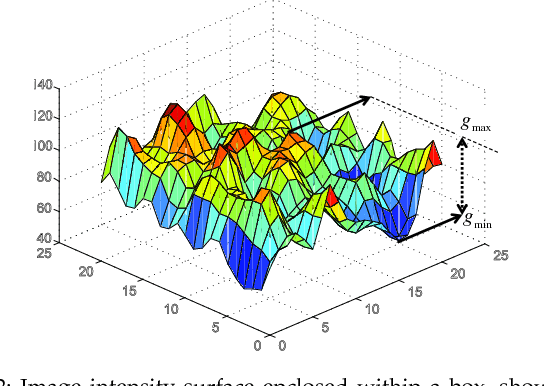
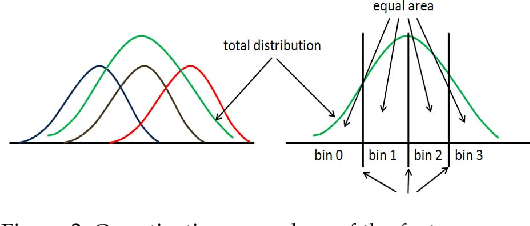
Abstract:In this paper we propose a novel texture descriptor called Fractal Weighted Local Binary Pattern (FWLBP). The fractal dimension (FD) measure is relatively invariant to scale-changes, and presents a good correlation with human viewpoint of surface roughness. We have utilized this property to construct a scale-invariant descriptor. Here, the input image is sampled using an augmented form of the local binary pattern (LBP) over three different radii, and then used an indexing operation to assign FD weights to the collected samples. The final histogram of the descriptor has its features calculated using LBP, and its weights computed from the FD image. The proposed descriptor is scale invariant, and is also robust in rotation or reflection, and partially tolerant to noise and illumination changes. In addition, the local fractal dimension is relatively insensitive to the bi-Lipschitz transformations, whereas its extension is adequate to precisely discriminate the fundamental of texture primitives. Experiment results carried out on standard texture databases show that the proposed descriptor achieved better classification rates compared to the state-of-the-art descriptors.
Local Jet Pattern: A Robust Descriptor for Texture Classification
Jul 08, 2018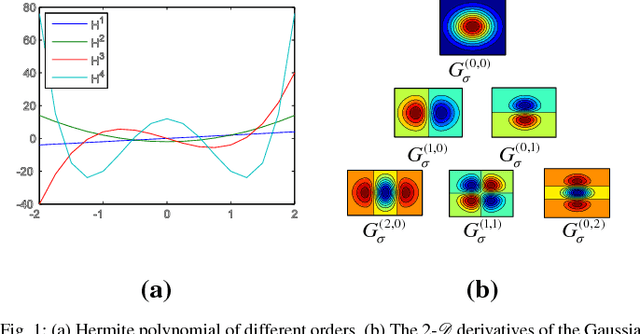
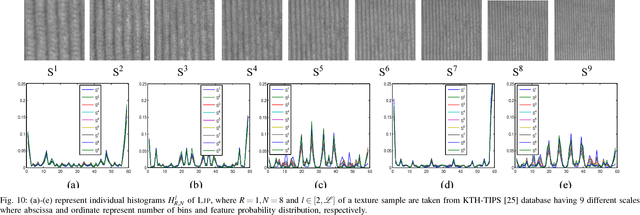
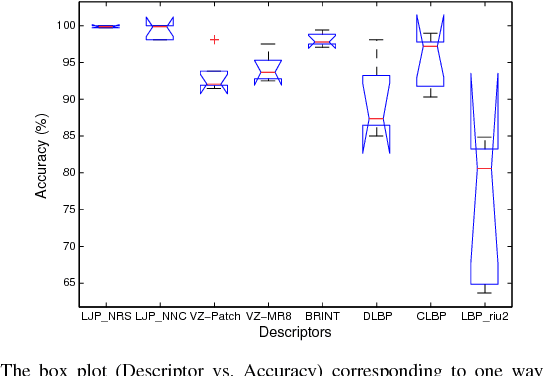
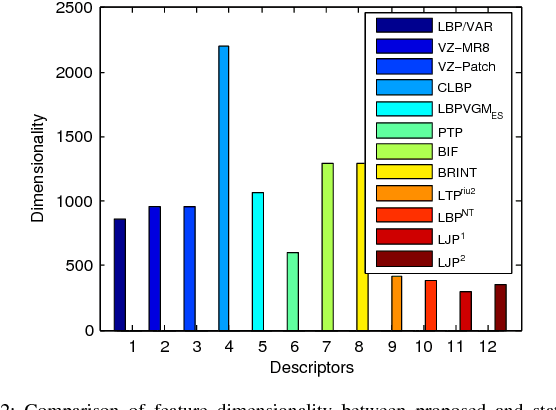
Abstract:Methods based on local image features have recently shown promise for texture classification tasks, especially in the presence of large intra-class variation due to illumination, scale, and viewpoint changes. Inspired by the theories of image structure analysis, this paper presents a simple, efficient, yet robust descriptor namely local jet pattern (LJP) for texture classification. In this approach, a jet space representation of a texture image is derived from a set of derivatives of Gaussian (DtGs) filter responses up to second order, so called local jet vectors (LJV), which also satisfy the Scale Space properties. The LJP is obtained by utilizing the relationship of center pixel with the local neighborhood information in jet space. Finally, the feature vector of a texture region is formed by concatenating the histogram of LJP for all elements of LJV. All DtGs responses up to second order together preserves the intrinsic local image structure, and achieves invariance to scale, rotation, and reflection. This allows us to develop a texture classification framework which is discriminative and robust. Extensive experiments on five standard texture image databases, employing nearest subspace classifier (NSC), the proposed descriptor achieves 100%, 99.92%, 99.75%, 99.16%, and 99.65% accuracy for Outex_TC-00010 (Outex_TC10), and Outex_TC-00012 (Outex_TC12), KTH-TIPS, Brodatz, CUReT, respectively, which are outperforms the state-of-the-art methods.
 Add to Chrome
Add to Chrome Add to Firefox
Add to Firefox Add to Edge
Add to Edge